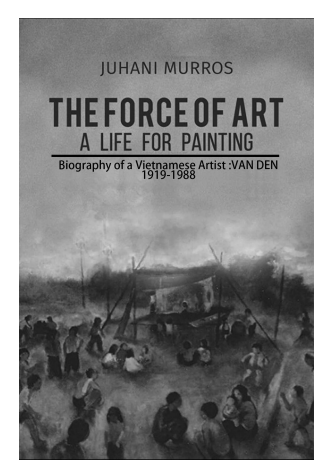
"By removing needless details in pursuit of perfection, Van Den followed in the footsteps of many great artists, writers, composers, and painters."
Juhani Murros made an unexpected discovery during his visits to art galleries when he worked for an organization in Ho Chi Minh City in 1990. A small still life in an unnoticeable gallery commanded the Finnish physician's attention. "It was not an eye-catching oil painting, yet its dark, mysterious colors and the emotional tension of its disciplined composition set it apart." Thus began a long journey of discovering the art and life of Van Den, a Buddhist of mixed Chinese and Vietnamese ancestry who studied in Paris for less than two years during the first French Indochina War.
Murros' biography is, by necessity, brief because there is limited knowledge of the artist, mostly in oral way by family and friends. Many of his paintings did not survive the damp Southeast Asian climate nor the political chaos of his lifetime. However, the author's research appears to be extensive, as much a years-long spiritual examination of Van Den as a historical one. The artist's love for country life is apparent in his work, and it is said by those who knew him that he preferred to paint countryside scenes close to his heart and worked as an outsider. He is uninterested in the more elegant work of academically recognized painters. Despite these limitations, Van Den won Vietnam's most honorable art award in 1960.
Murros gives an in-depth look into the life of this little-known unsung master. The book introduces the readers to Van Den's art with photographs of his paintings, accompanied by short stories behind them. The book is as quiet as the artist's work, but it is a satisfying read. Each stroke of words in the book connects to the readers; the narrative awakens the artistic spirit in each one of us, encouraging us to follow our heart.